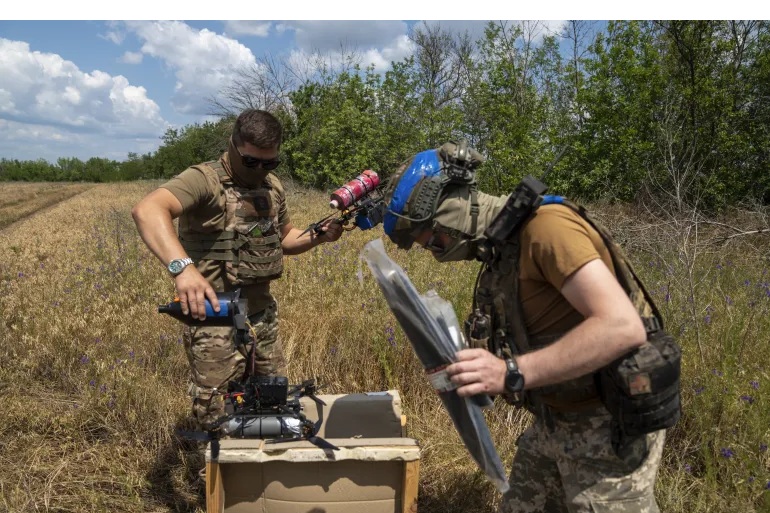A Ukrainian drone strike on a military industrial facility in central Russia on Tuesday, July 1, 2025, has left three dead and 35 injured, according to Russian officials.
The incident, according to media reports, which occurred at the Kupol plant in Izhevsk, more than 1,300 kilometers (800 miles) from the Ukrainian border, marks one of the deepest confirmed Ukrainian attacks on Russian territory since the war began in February 2022.
Alexander Brechalov, governor of Russia’s Udmurt Republic, stated on Telegram that ten of the injured remain in serious condition.
The blast, which triggered a significant fire at the site, has once again raised concerns over the vulnerability of Russia’s domestic defense infrastructure.
The Kupol plant is known to be a key production hub for air defense systems and unmanned aerial vehicles (UAVs) used by the Russian military.
While Kyiv has not officially commented on the strike, a Ukrainian security source confirmed to Reuters that their forces were behind the operation, describing it as a successful special mission.
“Each such special operation reduces the enemy’s offensive potential, disrupts military production chains, and demonstrates that even deep in Russia’s rear, there are no safe zones for its military infrastructure,” the unnamed official from Ukraine’s Security Service (SBU) told AFP.
If verified, the attack would rank among the most far-reaching of Ukraine’s drone strikes. Although not quite as distant as the reported May 2023 strike on Orsk—about 1,800 kilometers from Ukraine—it nevertheless underscores Kyiv’s growing reach and technological sophistication in drone warfare.
This escalation comes on the heels of President Volodymyr Zelenskyy’s renewed emphasis on scaling up Ukraine’s drone production.
In a recent Telegram post, Zelenskyy highlighted drones as a top priority, with a focus on expanding both interceptor and long-range strike capabilities.
The call to action follows a particularly intense month, with Russia launching over 5,400 long-range drones at Ukraine in June alone, its highest monthly total yet, according to AFP.
Kyiv’s counterstrategy appears to hinge on leveraging asymmetric warfare and precision drone strikes to erode Russia’s military momentum.
Ukraine’s top military commander has promised to intensify the “scale and depth” of attacks within Russian territory.
This is an approach that is becoming increasingly evident with operations like the Izhevsk strike.
In parallel, diplomatic tensions continue to simmer.
On Monday, Keith Kellogg, a Ukraine envoy affiliated with U.S. presidential candidate Donald Trump, accused Moscow of deliberately stalling peace negotiations.
“Russia cannot continue to stall for time while it bombs civilian targets in Ukraine,” Kellogg asserted.
The Kremlin swiftly dismissed the claim.
Dmitry Peskov, spokesperson for Russian President Vladimir Putin, insisted that Russia had no interest in prolonging the conflict for strategic gain.
Despite these claims, a date for the next round of negotiations remains undecided.
Meanwhile, in eastern Ukraine, the Moscow-backed administration in Luhansk claimed that the region is now fully under Russian control, a claim that Kyiv has yet to confirm or challenge.
Taken together, these developments paint a picture of a conflict entering a new and dangerous phase.
Ukraine’s increasing reliance on precision drone warfare has not only extended the battlefield deep into Russian territory.
It has also raised questions about the sustainability of Russia’s military-industrial complex under prolonged stress.
The attack on the Kupol plant is more than a symbolic strike; it highlights a strategic shift in Ukraine’s approach.
An approach that targets not just the frontline, but the very machinery that fuels Russia’s war effort.
As both nations double down on drone capabilities and information warfare, the coming months could see a further blurring of traditional frontlines and a deepening of the conflict’s technological dimensions.
The international community continues to watch closely, wary of further escalation and the potential for the war to spiral beyond its current scope.
But one thing is increasingly clear: in this 21st-century conflict, drones are not just tools of surveillance or strike, they are reshaping the very nature of warfare.



